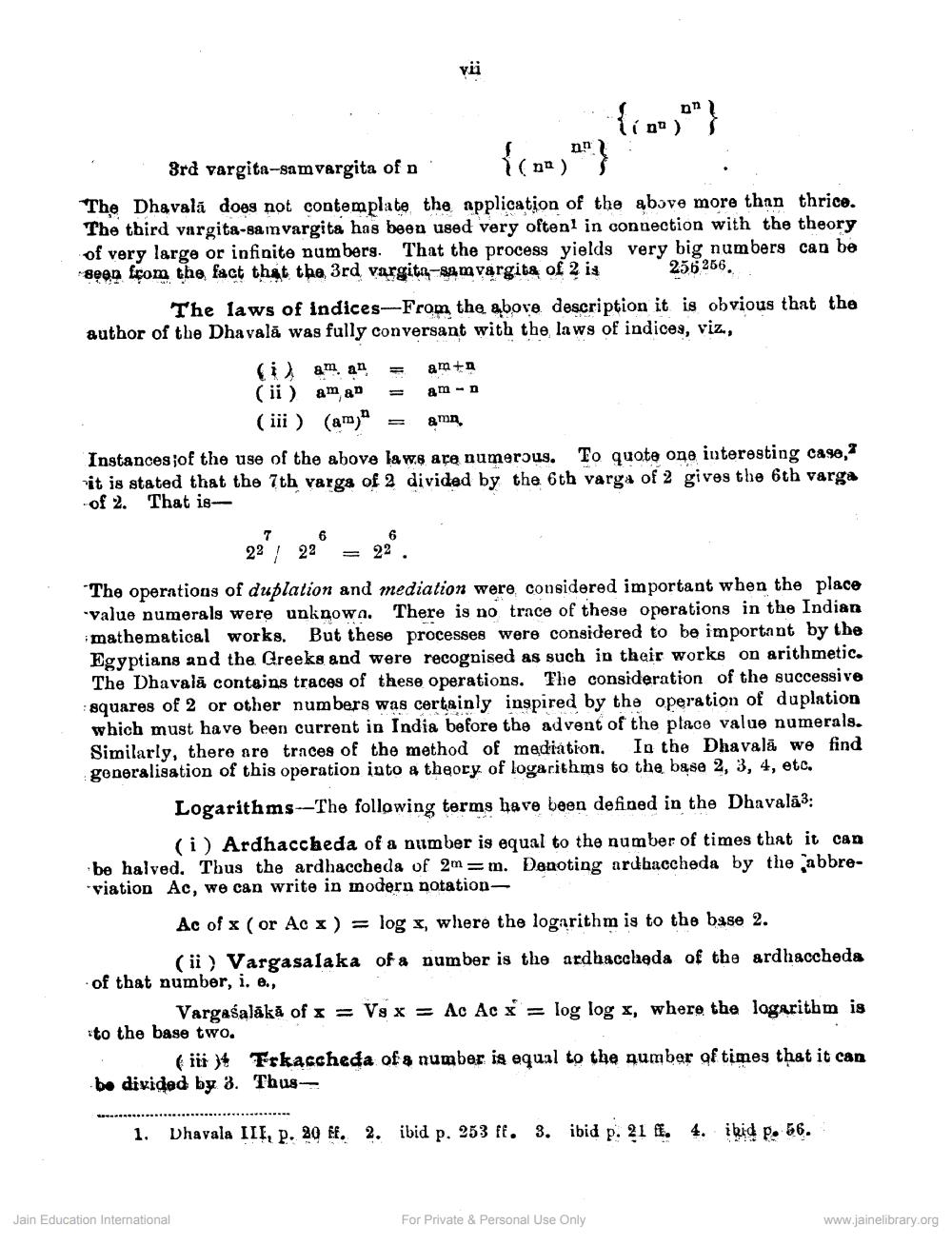________________
3rd vargita-samvargita of n
(na)
The Dhavala does not contemplate the application of the above more than thrice. The third vargita-samvargita has been used very often! in connection with the theory of very large or infinite numbers. That the process yields very big numbers can be soon from the fact that the 3rd vargita-samvargita of 2 is
256266,
(έλ από από (ii) aman (iii) (am
vii
The laws of indices-From the above description it is obvious that the author of the Dhavala was fully conversant with the laws of indices, viz.,
7
6
23 / 22 = 22
nn
22o.
am+n am -D
amn
Instances of the use of the above laws are numerous. To quote one interesting case, it is stated that the 7th varga of 2 divided by the 6th varga of 2 gives the 6th varga of 2. That is
Jain Education International
nn
{}
í na
"The operations of duplation and mediation were considered important when the place value numerals were unknown. There is no trace of these operations in the Indian mathematical works. But these processes were considered to be important by the Egyptians and the Greeks and were recognised as such in their works on arithmetic. The Dhavala contains traces of these operations. The consideration of the successive squares of 2 or other numbers was certainly inspired by the operation of duplation. which must have been current in India before the advent of the place value numerals. Similarly, there are traces of the method of mediation. In the Dhavala we find generalisation of this operation into a theory of logarithms to the base 2, 3, 4, etc.
Logarithms-The following terms have been defined in the Dhavala3:
(i) Ardhaccheda of a number is equal to the number of times that it can be halved, Thus the ardhaceheds of 2mm. Denoting ardhaecheda by the abbreviation Ac, we can write in modern notation
Ac of x (or Ac x) = log x, where the logarithm is to the base 2.
(ii) Vargasalaka of a number is the ardhsccheda of the ardhaccheda of that number, i. e.,
Vargasalaka of x = Vax Ac Aex log log x, where the logarithm is to the base two.
(iii) Frkaccheda of a number is equal to the number of times that it can be divided by 3. Thus
1. Dhavala III, p. 20 H. 2. ibid p. 253 ft. 3. ibid p. 21. 4. ikid p. 56.
For Private & Personal Use Only
www.jainelibrary.org




